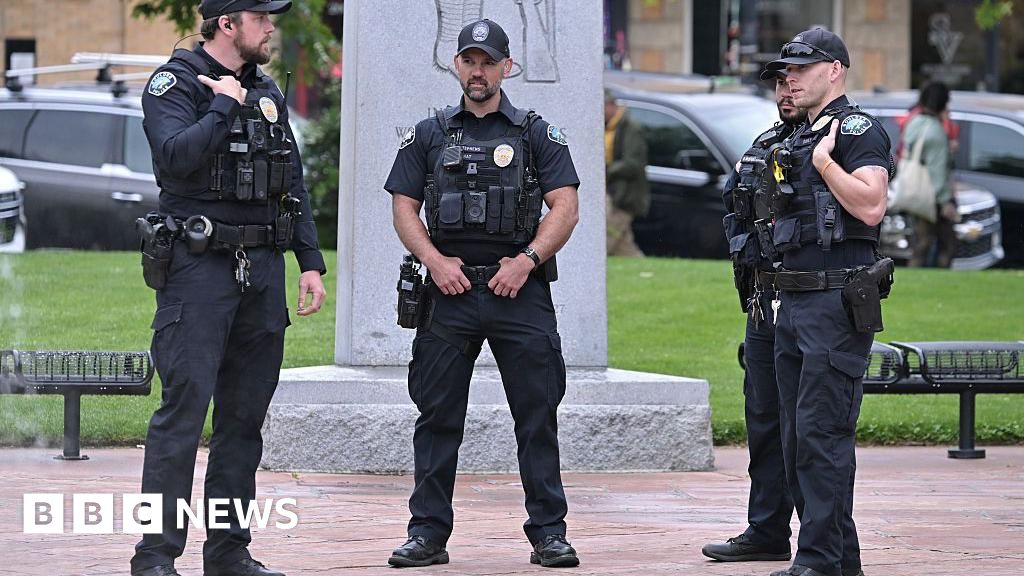ARTICLE AD BOX
Watch: How quickly water rises in a storm surge
As Hurricane Idalia makes landfall in Florida, residents are being warned about the storm surge it is bringing.
The "life-threatening" coastal flood could bring ocean water up to 16 feet (5m) above ground level, officials say.
Early Wednesday morning, just before Idalia made landfall, some Florida towns were already reporting surges of up to six feet.
More than 1.5 million people across 28 counties have been asked to evacuate because of the potential catastrophic impacts from the surge.
In general, storm surges account for about half of deaths associated with tropical storms in the US, according to the National Weather Service.
Those closest to the coast are most at risk, Florida Governor Ron DeSantis said in a news conference on Wednesday.
"There's going to be a legitimate surge. It's going to be a big, big deal, and it's going to be very, very dangerous," he said.
What is a storm surge and why is it deadly?
A storm surge is a change in sea level caused by a storm. Large waves can be generated by the strong winds, pushing high levels of water inland.
It could lead to extensive flooding, with waves so strong they can erode beaches and highways and take out buildings. It could also cause lakes and rivers inland to flood.
"The water has a lot of mass, and when it moves it generates a lot of force on structures," said Steven Morey, a professor at the Florida A&M School of the Environment.
"You get a lot of forces pushing on structures and they are just not built to withstand it, they could knock them down or knock people down," Prof Morey told the BBC.
Mostly all of Florida's western coast will see a rising tide in the next 36 hours, the NWS said on Monday, though some areas will be harder hit than others.
The tide will be highest between the Ochlockonee River, southwest of Tallahassee, and the Chassahowitzka River, about 66 miles (106 km) north of Tampa.
Prof Morey said he is particularly concerned about some of those areas, which have small communities that have not seen a major hurricane since 1935.
This includes the town of Steinhatchee, home to around 500 people, and the city of Cedar Key, home to nearly 700 people.
"None of the structures (in those towns) have gone through what they are going to go through," Prof Morey said.
He added it is important that people heed the evacuation orders and leave, and that there are not structures safe enough to withstand the waves in those areas.
For those who don't leave, conditions could prove fatal, Mr DeSantis said.
"If you end up with a storm surge that even approaches 16 feet, the chance of surviving that is not great. You would need to be even like on a three-story building, because it's going to rise very, very highly," he said.
Parts of Tampa itself - the third most populous city in Florida at nearly 400,000 residents - are also under storm surge warnings, but with slightly milder impacts as water is projected to rise up to 7ft in the region.
Still, water that high could pose a threat to Tampa's low-lying areas. But Prof Morey said Tampa is more familiar with storm surges and its structures are more well-built than other areas at risk.
Will the Super Moon make the storm surge worse?
Hurricane Idalia coincides with a super moon - meaning a full moon that is in close proximity to earth.
Full moons and new moons are known to have an impact on tide levels due to the gravitational pull that occurs when the sun, moon and earth are in alignment.
This causes extra-high high tides, and very low low-tides - both commonly known as spring tides.
Prof Morey said there is no doubt that the super moon's influence will be felt on the predicted storm surge in Florida.
"This area where the storm is projected to hit has the largest tidal range in the entire Gulf of Mexico," he said, adding the difference between high tide and low tide is 3ft to 4ft.
"When you're talking about a 12-foot storm surge, the difference can be significant."

 1 year ago
48
1 year ago
48








 English (US) ·
English (US) ·